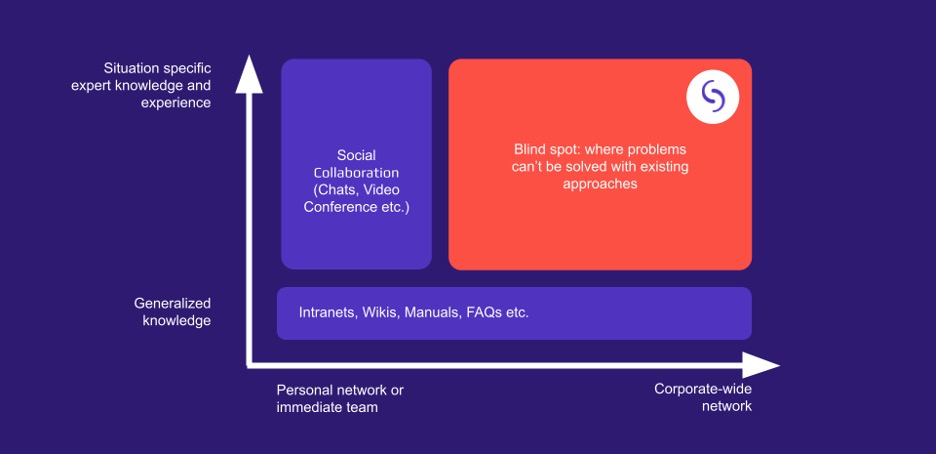Reducing Information Overload With AI
in-person meetings. These social collaboration tools and others support you in interacting within your organization. providing access to the knowledge and experience you need for specific situations. However, social collaboration tools typically limit your scope of interaction with colleagues and teams.
Corporate-wide comprehensive tools like intranets, wikis, manuals, and FAQs support your organization’s entire network. They allow everyone to access the information. However, the knowledge and experience documented here are typically top-level and require lots of effort to maintain and ensure information relevancy.
Between collaboration tools supporting situation-specific knowledge-sharing with your immediate network and corporate-wide bases for generalized knowledge, there is a knowledge blind spot where problems are left unresolved due to their limitations or because they are within a silo. And we haven't even covered the tools added departmentally with limited access—further increasing the data captured, information needing to be exchanged, and silos created.

Figure 1: Organizational blind spots
Too much information
Have you ever taken a bathroom break and returned to four new emails from colleagues, nine Slack notifications and one new meeting invite? With growing tech stacks and silos, you and your colleagues may not have access to the information you need when the time comes. Silos make even explicit data and knowledge already captured within your organization inaccessible—meaning you and your colleagues must actively find each other and facilitate the exchange of information. As a result, you step away from your work to answer colleagues' questions (emails, notifications, attend meetings) or are left searching for someone who might have the answer.
Redundant data, content and questions
Have you ever input the same information into separate documents and tools? Or sifted through several resources that shared the same information? Answered the same questions for multiple colleagues?
Inputting data into several sources is time-consuming and a nightmare to maintain. It becomes increasingly complex and confuses everyone if forgotten, not linked, or ignored. What would you do if you found two different documented answers to the same question? Ask a colleague?
When internal documentation fails to give us the answers we need, we are left asking colleagues for help, or worse, we are stuck answering the same redundant questions to help our colleagues. Because business constantly changes and answers become outdated, this becomes a never-ending cycle.



















